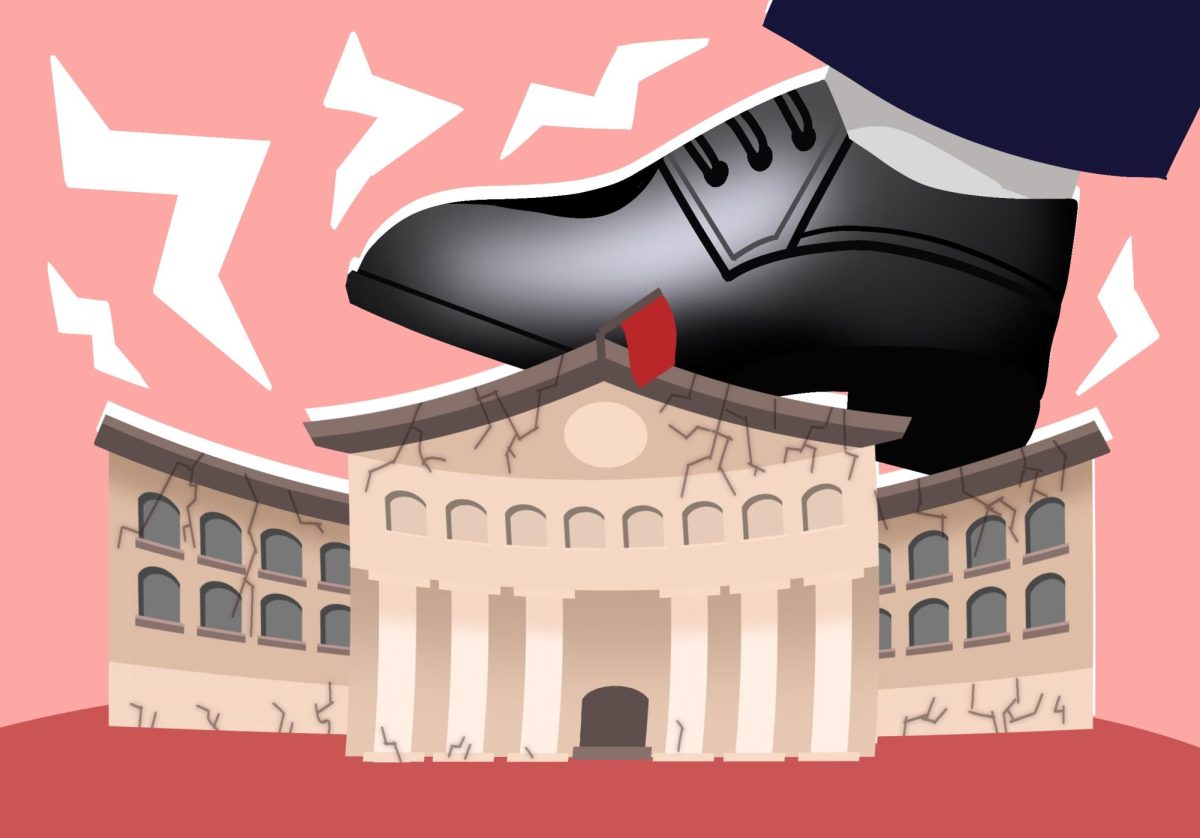This series is not about a tuition hike. It is not about bookstore price gouging. It’s not about credit card or student loan companies.
Instead, this series is about students who charge all their books to credit cards because they just took out another loan to cover the skyrocketing costs of higher education.
Welcome to the University of Minnesota.
The broad context of this situation is not relegated to the University. Across the nation, legislatures are cutting back on higher education funding. Some simply lack the money. Others lack the will.
While The Minnesota Daily recognizes and has researched this trend, we have done so with this state, these cities and this institution in mind.
Here, at one of the largest public land grant and research institutions in the nation, you have myriad opportunities to study under and with some of the best faculty in the world. Here, you have access to more facilities than anywhere else in the Upper Midwest. At the University, you can stand at the confluence of 150 years of institutional knowledge and instant, personal access to the world at large.
But it’ll cost you.
The Legislature passed a higher education funding bill last month covering $110 million of the University’s requested $221 million increase. In response, University President Mark Yudof told the regents the University could continue to operate as well as it had in the past only if they increased tuition about 14 percent.
Clearly, the situation was dire.
When circumstances like these arise, the causes are almost never simple or readily apparent. So The Minnesota Daily began to dig, looking for a root.
What we found was a system of interconnected circumstances, some accidental, some intentional, a few downright improbable.
At the top of the ladder stand an unconventional governor and a three-party government seemingly unable to come to terms with itself.
In the past, the governor typically recommended more money for higher education than the Legislature was willing to pay. Gov. Jesse Ventura, however, has gone in a radically different direction. Sticking to his “If you’re smart enough to go to college, you’re smart enough to pay for it” ideals, he low-balled higher education’s funding requests by several hundred million dollars. And from a free-market standpoint, he was right to do so.
Legislators, it seems, didn’t know how to handle it. When the governor originally proposed giving the University a $56 million increase, Senate Higher Education Finance Committee Chairwoman Deanna Wiener, DFL-Eagan, took a hard-line stance.
“I told the governor,” she said in February, “I said, ‘We are not going to agree with your budget in the Senate. We will put more money in.'”
And she did. After salvaging $34 million from the $165 million shortfall, Wiener said earlier this month she was “satisfied this legislation provides much-needed resources for our campuses.”
Though she was satisfied, the appropriations left Yudof to figure out what to do about the remaining $131 million deficiency.
About $111 million of that – 84.7 percent – will come from a 13.8 percent tuition increase.
Trickle-down economics at its best.
And tuition is not the only cost overrun passed almost directly on to students. Minneapolis is in the midst of one of the worst housing crises in the country. High property taxes and a severe shortage of affordable housing has made this city an expensive place to live – a problem Mayor Sharon Sayles Belton has done almost nothing to alleviate. While $62 million goes toward subsidizing a Target store on Nicollet Mall, low-income housing construction remains stagnant.
Quietly lurking in the shadows of all this are a series of alarming statistics:
ï The University’s 51-percent six-year graduation rate squats at the bottom of the Big Ten, making this the only institution in the bunch unable to meet its own goals.
ï As tuition has risen over the past few years, so has fund raising and the number of administrators needed to make that endeavor more profitable. In the meantime, the number of tenured faculty dropped by more than 190.
ï Far more students work far more hours here than at most colleges in the nation. On Friday, The Minnesota Daily will publish an article linking this to the graduation rates. However, on the positive side, those who do graduate have much less student loan debt, on average. And while the University recognizes students can’t simultaneously be full-time workers and full-time pupils, tuition continues to rise.
As for bookstores, I’ll leave those to a story The Minnesota Daily will run in August.
Still, these circumstances in no way absolve students from any responsibility. Students don’t have to pay for cell phones. Students who live on or near campus don’t have to own cars. Many can take out more loans. Most importantly, they are not helpless or mute. This series lays plain the front lines and, if anything, points out just how close to the battle they are.
The world is not allied against today’s student. There are people out there who genuinely want to help them and, if we did our job truthfully, that will come out.
But one truth to be gleaned from all we have researched is that the good intentions of a few well-meaning people cannot override the political and fiscal aspirations of so many others.
Higher education is a multi-billion-dollar industry.
A lot of people want their cut of the price of knowledge.
Mike Wereschagin welcomes comments at wereschagin@mndaily.com







